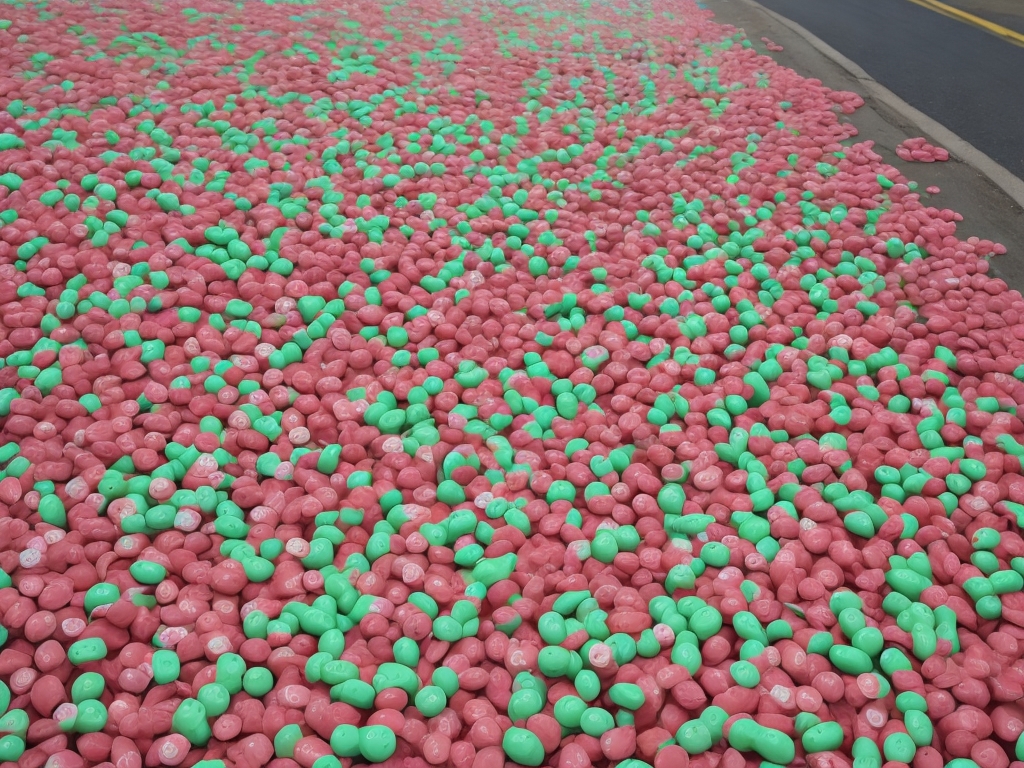
Have you ever thought about what happens to that piece of chewing gum you toss on the street or stick under a desk? It might seem harmless, but the reality is that chewing gum pollution has far-reaching consequences that most people are unaware of.
The Sticky Situation
Chewing gum is a universal habit cherished by people of all ages, offering a quick burst of flavor and serving as a stress reliever or boredom buster. However, its sticky nature becomes a genuine issue when carelessly discarded. Unlike organic materials, gum doesn’t biodegrade rapidly; instead, it persists, often clinging to sidewalks, streets, and public spaces for an extended period, sometimes even decades.
Environmental Impact
The environmental consequences of chewing gum pollution are a cause for significant concern. At the heart of this issue lies the composition of chewing gum itself, primarily consisting of non-biodegradable synthetic rubber. When people carelessly discard gum, it transforms into a long-lasting pollutant that poses a serious threat to ecosystems.
As rainwater washes away these discarded gum remnants, they often find their way into storm drains. From there, the journey continues, leading them into our rivers and eventually the vast expanse of our oceans. In these aquatic environments, chewing gum pollution becomes a hazard for marine life.
The persistent nature of gum means that it can be mistaken for food by marine animals, especially when it breaks down into smaller, more digestible pieces. This can lead to ingestion, blockages, and digestive problems among marine creatures, creating a ripple effect through the entire food chain.
The far-reaching environmental impact of chewing gum pollution serves as a stark reminder of the need for responsible disposal practices and the importance of raising awareness about this often-overlooked issue. By taking steps to curb gum pollution, we can contribute to the preservation of our fragile ecosystems and protect the diverse life forms that call them home.
Microplastics in Disguise
Chewing gum pollution poses an alarming threat as it deteriorates over time, breaking down into minuscule particles that closely resemble food to birds, fish, and other wildlife. These tiny gum remnants often end up in the digestive systems of unsuspecting animals, resulting in a host of severe consequences.
The ingestion of these microplastics can lead to a range of health issues for wildlife, from digestive complications to blockages and, in the worst cases, even death. This distressing scenario underscores the urgent need for addressing the issue of gum pollution.
The presence of gum pollution significantly exacerbates the global microplastics problem, which has been steadily infiltrating our ecosystems. These microplastics, whether from chewing gum or other sources, pose a dire threat to the delicate balance of our ecosystems, impacting not only the animals but also the entire ecological web that sustains life on our planet.
Our careless disposal of chewing gum indirectly contributes to the mounting microplastics crisis. It’s imperative that we acknowledge the gravity of this issue and take immediate steps to reduce our environmental footprint, starting with responsible gum disposal practices.
Economic Consequences
The economic fallout resulting from chewing gum pollution should not be underestimated. Local governments and municipalities find themselves allocating substantial sums annually to combat this pervasive issue. These financial resources are directed towards labor-intensive gum removal efforts, which involve scraping gum from sidewalks, streets, and various public spaces.
This expenditure on gum removal represents a significant drain on community budgets. The funds used for these efforts could otherwise be channeled towards addressing more pressing and essential community needs, such as education, healthcare, infrastructure improvement, and environmental conservation initiatives.
The economic consequences of chewing gum pollution extend beyond the immediate costs of removal. They encompass the opportunity cost of diverting resources away from critical projects that could enhance the overall quality of life for residents and contribute to the sustainable development of our communities. Recognizing the economic implications of this issue further underscores the urgency of adopting responsible gum disposal practices and raising awareness about the broader impacts of gum pollution.
Urban Aesthetics
Chewing gum pollution doesn’t just have environmental and economic consequences; it also profoundly impacts the aesthetic appeal of our urban areas and public spaces. It takes what were once picturesque sidewalks and charming squares and transforms them into unsightly, sticky messes that mar the overall beauty of our cities.
The visual blight caused by chewing gum remnants not only diminishes the quality of life for residents who have to navigate through these unsightly patches daily but also sends a negative message to visitors and tourists. Unsightly gum stains give the impression of neglect and carelessness, detracting from the overall charm and appeal of a city or town.
Tourists, in particular, are sensitive to the aesthetics of a place they visit. The presence of chewing gum pollution can deter them from returning or recommending the destination to others. This, in turn, has a direct impact on the local economy, as tourism often represents a significant source of revenue for many urban areas.
Potential investors and businesses seeking to establish themselves in a location may be discouraged by the visual blight of chewing gum pollution. The overall appeal of an area, including its cleanliness and aesthetic beauty, plays a pivotal role in attracting new businesses and fostering economic growth.
The consequences of chewing gum pollution extend beyond the environmental and economic realms to the very heart of our urban aesthetics. It’s a reminder that responsible gum disposal is not just an environmental issue but also a matter of pride in our communities and the image we present to the world.
Health Concerns
While the primary focus of chewing gum pollution is on its environmental impact, it’s worth noting potential health concerns as well. Gum that’s been on the ground can accumulate dirt, bacteria, and toxins. In some cases, children and adults inadvertently pick up and chew gum that can lead to health problems.
Rethinking Our Habits
Now that we understand the far-reaching effects of chewing gum pollution, what can we do about it? Here are a few simple steps to help mitigate this problem:
Public spaces should provide designated bins for gum disposal. Encouraging responsible disposal can significantly reduce litter.
Inform the public about the environmental consequences of gum pollution. When people understand the impact of their actions, they are more likely to change their behavior.
Some companies now offer biodegradable gum options. These gums break down more naturally and are a better choice for those concerned about the environment.
Encourage people to seek alternative stress-relief methods or snacks that don’t create waste.



